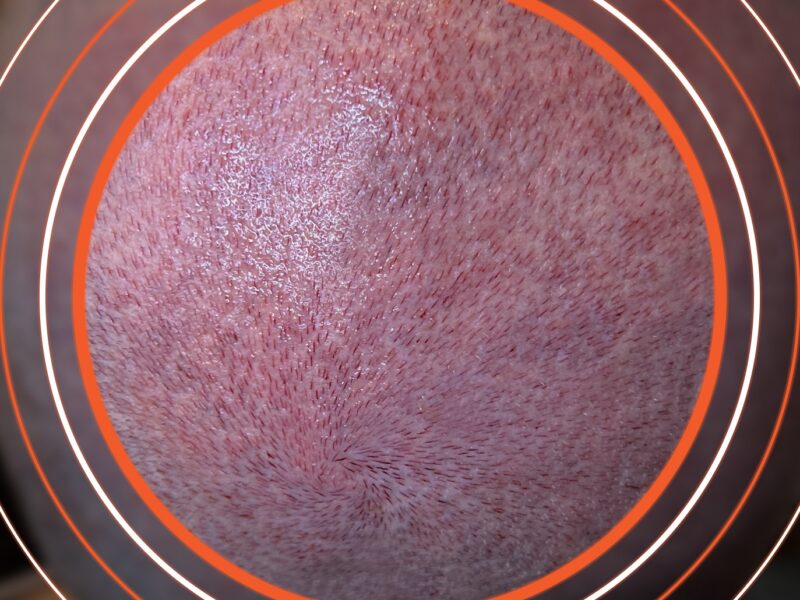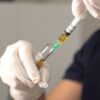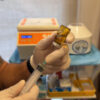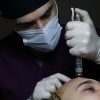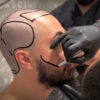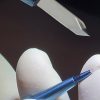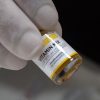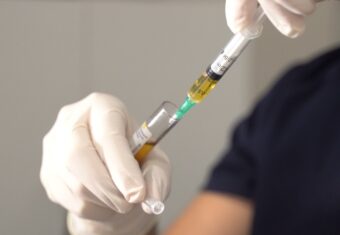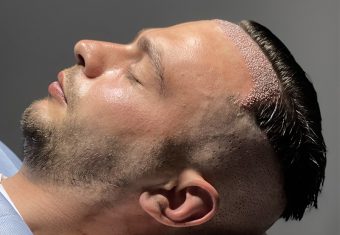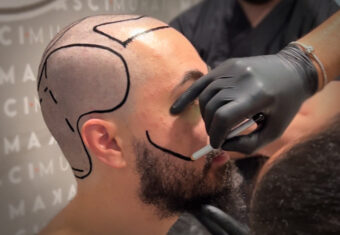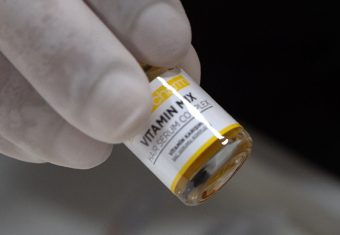Contents
360 degree Vertex (Peak Area) Hair Transplantation
In the planning of hair transplantation the area called vertex,is shaped in a rose in order to make it look more natural.Thanks to this method even if the hair is used short or long it will not lack the natural apperience.
The term ‘Vertex’, a term of Latin origin, means ‘hill region, peak’. In hair transplantation, the term Vertex is used for the back of the head.
Although hair transplantation planning is primarily based on the front side, it is essential to evaluate the vertex region in order to complete the aesthetic appearance. People who have hair loss problems in the crown area will have a successful appearance in the front profile, but will have problems in the back and side profile
Vertex Hair Transplant
When it comes to hair transplantation, people usually think of the frontal region. In male pattern spills, the cultivation area is divided into 7 zones. However, these regions can be collected in 3 main regions, namely the anterior, middle and posterior regions. While talking to people in daily life, looking at herself in the mirror or taking pictures, she primarily uses the front area. Planning is done from front to back, since the region that gives profile to people is the face region and the complement of the face region is the front region. According to the donor area situation, if there is a large opening and the donor area is not enough to completely close the transfer area, planning is done for the front and middle parts. Vertex is left for a second session, which can be done after an average of 1 year at the earliest.
Although the anterior region is considered to be more important than the vertex region when it is put in order of importance, the transfer area does not only consist of the anterior region. For a natural image, it should accompany the front region in the hill region. Otherwise, while people have a strong profile from the front, they will have problems in the side or rear angle.
360 Degree Hair Transplantation / Vertex Hair Transplantation
Differently from the anterior region, the canal angles are given 360 degrees in the plantings to be made in the hill region. The reason for this is precisely to capture the natural image. The person may want to use their hair short over time. While the hair directions in the crown area do not disturb the person in long uses, 360-degree canal directions gain importance as the canal directions will become more visible in short uses.
The places where the grafts, called channels, will be placed, have 3 different dimensions: right-left, up-down and depth. Since the tissue thickness in the crown region is higher than the anterior region, this situation should be observed in the crown region plantings and the planning should be done according to eachother. In order to capture the rose image in vertex plantings, the right-left angles should be 360 degrees, while the up-down direction structure should be adjusted. Otherwise, the grafts will remain on the surface and undesirable losses will occur due to their inability to feed.
Things to Consider in Vertex Hair Transplantation
Another important issue to be considered while planning the planting in the hill region is the risk that shedding may continue. A Vertex hair transplant operation, which will be performed in the early stages without considering the risk that the shedding map may change, may turn into an uncomfortable appearance in the near future, although it makes the person happy at first. The reason for this is the change in the spill map and the increase in the opening in the Vertex region. In such cases, since no shedding will be observed in the previously transferred hair follicles, the hair around it continues to fall out while the transplanted hair remains. While the previous planting hair remains in the middle, a ring-shaped space is formed around it. This is also called the ‘horse tail’ image among the people. In order to protect the person from such an unnatural appearance, the spill situation should be well analyzed at the planning stage and the person should be informed about the possible situations.
Vertex 2nd Session Planning
In Vertex hair loss, the operation should be planned in 2 sessions according to the shedding situation of the person, if there is a general deficit, and the priority should be given to the anterior region in the first session. If enough grafts are taken, hair transplantation can be planned in the crown area. If enough grafts cannot be collected from the donor area, the Vertex area should not be entered, the operation should be completed gradually at the beginning of the Vertex area. In this way, the image to be obtained after the operation will be as ‘there is no problem in the front part – the shedding started from the top area – it is coming forward (it will not). Since there are thousands of people who do not have spillage problem in the anterior region and only have spillage problem in the Vertex region, the person gets a natural appearance even though the Vertex region is empty. This is the way of planning that will disturb the person the least in large openings. At the end of an average of 1 year process, a second session operation can be planned again and a planning can be made from the back to the front. The hill region is determined as the 1st region and the first planning is made in this region. If the donor area allows more grafts to be collected, the anterior region can be supported with the remaining grafts.
Vertex Beard Supported Hair Transplant
As the donor area, the priority is always the nape area. The hair structure in the nape area and the hair structure in the transplantation area are the most compatible hair structures. In cases where the donor area is insufficient, the area that can be used as an additional donor area is the lower part of the chin on the beard. Apart from this, a hair transplant operation to be performed with body hair from one area will not give very successful results.
In cases where the beard is used as a donor area, the point that should not be forgotten is that because the beard is in profile, it is an additional donor area, not the main donor area. When this excessive stress is applied, an undesirable and disturbing image may occur in the profile. Therefore, beard frequency should be well analyzed in beard purchases, the person’s beard usage habits should be evaluated and planning should be made considering the risk of cutting one’s beard in the future. With the need for more grafts, more stress should not be applied to the beard.
Although the roots taken from the beard are similar to the hair follicles, they are slightly different from the hair follicles in structure. For this reason, the hair follicles collected from the beard should not be used in the front area of the profile in the planting area, should not be collected in a single area, but should be distributed homogeneously to the top area. With the planning made in this way, an extra density is obtained from the beard roots, while at the same time, the different form of the beard is camouflaged with the hair follicles taken from the nape area for a natural appearance. The issue to be considered is that the number of beard roots used in the study area should not exceed 1/4 of the number of hair follicles. If the ratio of the number of beard and hair follicles used deteriorates, in other words, if a planning is made in the form of more beard roots-less hair follicles, the beard roots will be dominant and a beard image will appear in the planned area. This situation continues to disturb the person constantly.
Post-Vertex Hair Transplant Process
The post-operative process in Vertex hair transplantation is similar to the normal post-operative procedure. The point to be considered is the sleeping position. For a safe sleep, you should be in a supine position with a neck pillow. The first 10-day period after hair transplantation is the phase of attachment of hair follicles to the tissue. At this stage, the hair follicles are in the healing process and may be displaced or removed in cases of rubbing or impact. For this reason, it should be protected against rubbing and bumps for 10 days.
A neck pillow should be used to protect the planting area during sleep for 10 days after the operation. Due to the neck pillow’s structure that wraps around the neck, the person will be safer while asleep. While the use of neck pillows is more comfortable in anterior region plantings, the risk of rubbing the neck pillow on the planting area increases in overhead plantings. Therefore, it is safer to sleep by pulling the chin to the chest during sleep. By using a neck pillow, the person can lie on the desired slope while in the supine position. The point that should not be forgotten is that no matter what angle you are, the chin should be pulled towards the chest.
When Does the Hill Region October Come Out?
Vertex texture differs according to the anterior region. Its blood supply is less and its thickness is more. This situation directly affects the hair growth time. While the hair in the front area, which has more nutrition opportunities, gives out earlier, the hair follicles in the top area give out later.
People who have planted front and top regions together, especially 6-7. may not see the increased density in the anterior region at the same rate in the peak region during the months. Usually, this situation creates anxiety in people, but this is an unfounded worry. As time goes on, the intensity in the front will begin to be seen in the hill region as well.
When the hair follicles in the crown region do not have the opportunity to nourish as much as the hair follicles in the anterior region, the recommended post-operative care products in crown transplantation are to be used. The gap in the nutrition ratio of the hair follicles in the front and top regions can be closed with care products rich in vitamins needed by the hair follicles, prepared according to the use after the hair transplantation operation.
Does the Hair in the Hill Area Hold?
Although the general opinion in Vertex hair transplant operations is that the success rate is low, this situation can be corrected. It is true that hair loss may occur due to the tissue thickness in the crown area and the less blood supply compared to the anterior region. However, this situation can be corrected with post-operative support.
As an example of post-operative supportive treatments;
- Autologous stem cell therapy,
- infusion steam therapy,
- Mesotherapy application,
- hair laser,
- The use of a maintenance kit can be given.
With these supporters, the deficiency caused by tissue thickness and slow circulation can be completed. Although they have different working principles, the main purpose of all supportive treatments is to revitalize the hair follicles in the area where they are applied.
Vertex Hair Transplant success rate
Today, thanks to the developing technology and increasing experience, the success rate of hair transplantation operations is over 90%. The success rate varies in direct proportion to the donor area and patency, as well as the technique used and the experience of the physician who will perform the operation.
The most important stage of the operation is the planning stage. In order for the operation to be successful, first of all, a good analysis should be made and the wishes, expectations, things to be done and what can be done should be evaluated, and a plan should be created by considering all these parameters. Otherwise, what will be done with the expectation of the person does not match each other and even if a very successful operation is performed in terms of medicine, it cannot be considered as a completely successful operation.
There is no single truth in aesthetic operations. What one person likes, another person may not. This is not because the situation is bad, but because their aesthetic perceptions are different. In fact, the most important success criterion in aesthetic surgery is the mirror. If a person does not feel well when she looks in the mirror, the success achieved on paper does not matter much. Plastic surgeries are not life-threatening and are usually done to feel better. That’s why it should feel good.
Vertex Hair Transplant Prices 2022
Operation fees vary according to the time of the operation, the package to be taken, and the planning to be made. You can get detailed information about the current vertex region (Vertex) operation fees here.

